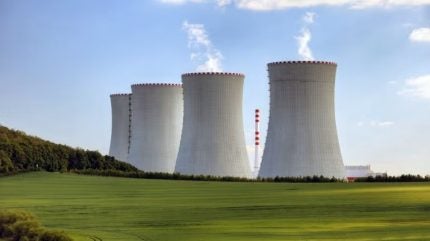
South Korea’s nuclear power output has surpassed official targets, reducing the country’s coal usage and energy import costs.
According to data from state-run utility Korea Electric Power Corp (KEPCO), the country saw an 8.7% year-on-year increase in nuclear power output for the first half of 2025 – three times the official plan for 2.9% annual growth.

Discover B2B Marketing That Performs
Combine business intelligence and editorial excellence to reach engaged professionals across 36 leading media platforms.
This growth is attributed to fewer maintenance outages, the addition of the 1.4 GW Shin Hanul #2 plant, and existing reactors operating at full capacity, which has contributed to lower generation costs and a decrease in coal usage.
KEPCO’s data revealed that while nuclear generation saw substantial growth, coal-fired output experienced a sharp 16% decline.
South Korea, with a population of 51 million, is Asia’s second-largest nuclear power generator after China. The country is increasing its nuclear generation capacity as policy resistance to the technology diminishes. This trend is evident across Asia, with Japan restarting idled plants and India commencing commercial operations of new reactors.
Despite tighter safety checks and maintenance shutdowns following the 2011 Fukushima disaster, which led to increased coal and liquefied natural gas use, South Korea’s nuclear output has risen 6.1% annually since power consumption stabilised in 2022.

US Tariffs are shifting - will you react or anticipate?
Don’t let policy changes catch you off guard. Stay proactive with real-time data and expert analysis.
By GlobalDataPresident Lee Jae Myung, who took office in June 2025, has pledged continued support for nuclear power.
Nuclear power’s share of total generation in South Korea rose to 31.7% in 2024, up from 25.9% in 2019, according to KEPCO data. This increase has largely offset the decline in coal’s share, which dropped to 28.1% from 40.4% over the same period.
GlobalData forecasts South Korea’s nuclear power generation to reach 222.7 terawatt hours in 2035, registering a compound annual growth rate (CAGR) of 2.4% between 2024 and 2035.
The shift towards nuclear has helped the country reduce its energy import costs, with overseas coal volumes and the coal import bill both falling significantly.
However, nuclear growth has led to transmission constraints, as reported by Reuters.
Seunghoon Yoo, a professor in the energy department at Seoul National University of Science and Technology, was quoted by the news agency: “Plenty of coal plants are sitting idle not by choice, but because there’s no spare capacity on the transmission lines to carry more power.”
Renewables, which include hydropower, are also affected by these constraints and contribute just over a tenth of annual power generation.
Power demand in South Korea has been driven by increased cooling requirements since 2022, while industrial demand has declined. Slow power demand growth has discouraged the operation of expensive gas-fired plants throughout the day, despite their proximity to Seoul.
Gas is increasingly used to manage volatility, with the Korea Power Exchange observing a pattern of gas plants operating during peak morning and evening hours.
Electricity consumption by semiconductor manufacturers and data centres is on the rise, but this has not significantly impacted fuel procurement, according to South Korea’s energy ministry.



